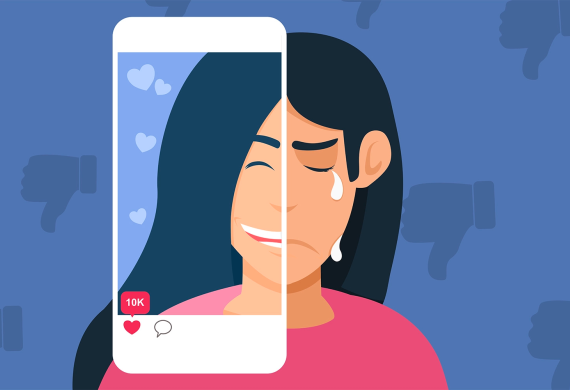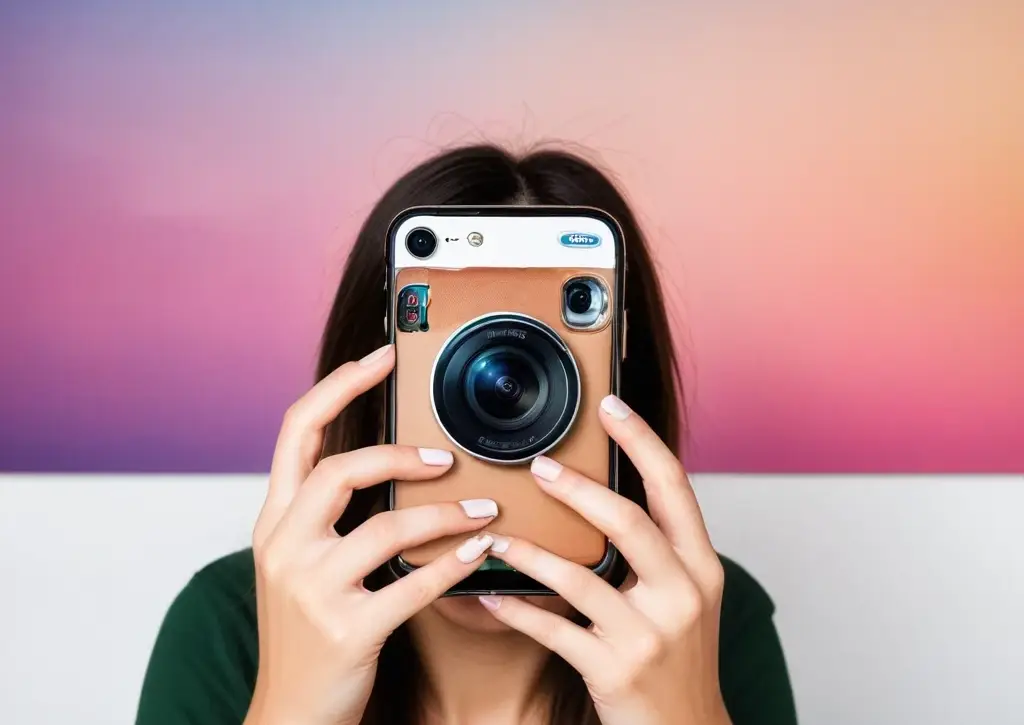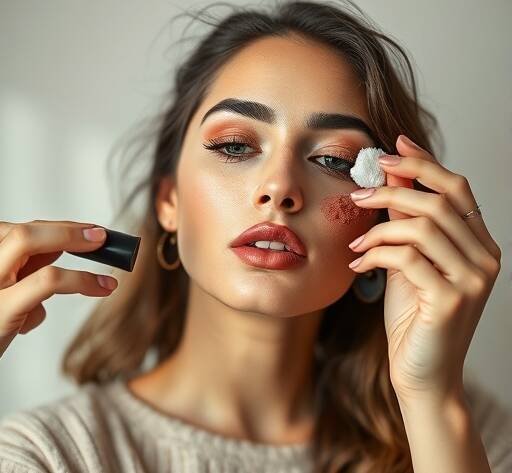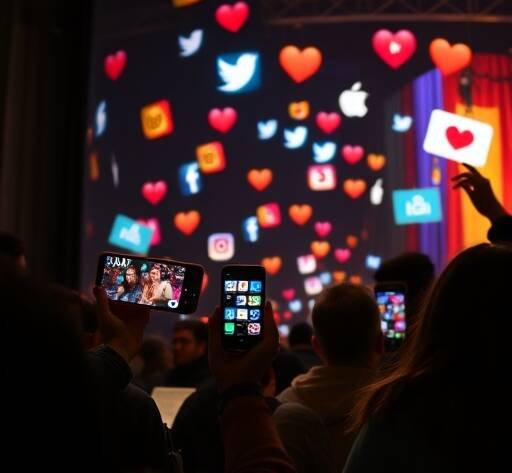How Instagram is Damaging Our Lives
Instagram, once a platform for sharing fun moments with friends and family, has become a source of stress, pressure, and self-doubt.
With the rise of Instagram Stories and other features, users feel compelled to curate an idealized version of their lives, often at the expense of their mental health.
This shift has fueled social media anxiety, FOMO (Fear of Missing Out), and negative effects on body image on social media, ultimately damaging our well-being. Here’s how Instagram has gone from a tool for connection to a trigger for stress and insecurity

Teen Social Media Use & Mental Health Impact
| Metric | High Social Media Use | Low Social Media Use |
|---|---|---|
| Poor/Very Poor Mental Health | 41% | 23% |
| Suicidal Thoughts/Self-Harm (Past 12 Months) | 10% | 5% |
| Poor Body Image | 17% | 6% |
Social Media Usage & Time Spent
| Metric | Data |
|---|---|
| Average Daily Social Media Use | 4.8 hours/day |
| Top 3 Apps (YouTube, TikTok, Instagram) | 87% of teens’ social media time |
| Teens Spending 5+ Hours/Day on Social Media | 37% |
Parental Influence on Teen Mental Health
| Metric | Weak Parental Monitoring & Relationships | Strong Parental Monitoring & Relationships |
|---|---|---|
| Poor Mental Health | 60% | 25% |
| Suicidal Thoughts/Self-Harm | 22% | 2% |
The Constant Need to Share: A Source of Anxiety
One of the main ways Instagram affects us is by creating pressure to constantly share our lives, especially through Stories. These 24-hour updates push us to capture even the smallest moments of our day, making us feel like we always need to be sharing something.
- 37% of teens spend 5 or more hours a day on Instagram and other major social media apps (like YouTube and TikTok).
- 14% of teens spend 4 to less than 5 hours a day on Instagram and similar apps.
- 26% of teens spend 2 to less than 4 hours a day.
- 23% of teens spend less than 2 hours a day.

This pressure can easily become overwhelming, as it encourages users to be in a perpetual cycle of posting, editing, and perfecting their lives for an audience.
This constant sharing often leads to feelings of anxiety. Instagram thrives on FOMO (Fear of Missing Out), with everyone else seemingly living a more exciting life than ours. As we scroll through others’ curated posts, it’s easy to start comparing ourselves.
This comparison often leaves us feeling inadequate, like we’re not measuring up, leading to increased stress and a drop in self-esteem. Over time, these constant comparisons can cause serious emotional distress.
The Quest for Validation: Chasing Likes and Comments
Instagram is designed to make users crave validation. Every post we share is met with a rush of dopamine when we receive likes, comments, or new followers. This creates a feedback loop that feeds on external approval.
The more likes we get, the more we feel the need to keep posting, chasing that next hit of positive reinforcement.
However, this craving for validation can be dangerous. When a post doesn’t get the reactions we hoped for, it can leave us feeling rejected or not good enough.
Over time, this reliance on external validation can lead to a diminished sense of self-worth and greater anxiety. The constant need for approval from strangers or followers on the internet can distort our understanding of our own value.
FOMO and the Fear of Being Left Behind

The fleeting nature of Instagram Stories, which disappear after 24 hours, creates a sense of urgency. Users often feel they need to post frequently to stay relevant, fearing that if they don’t, they might be forgotten.
The fear of missing out on someone else’s story or not being part of the latest trend makes it difficult to enjoy a moment without thinking about how it can be shared.
This pressure to always stay on top of the latest updates can lead to burnout. We’re constantly checking to see what everyone else is doing, and we feel compelled to contribute our own updates to stay visible.
This cycle of consumption and production becomes mentally exhausting, leaving users feeling anxious and disconnected from the present moment.
Unrealistic Beauty Standards: The Impact on Body Image
Instagram’s focus on visual content has made it a platform that heavily influences beauty standards. With filters, editing tools, and influencers showing idealized versions of themselves, it’s easy to feel that we don’t measure up.

The constant exposure to these polished images can lead to dissatisfaction with our own bodies and create an unrealistic standard of what is beautiful.
The problem isn’t just with influencers and celebrities; everyday users are also contributing to these idealized images. As people increasingly use filters to enhance their appearance, it sets an unattainable bar for others to follow.
This constant exposure to “perfect” bodies and faces can erode body image and self-esteem, especially among young people.
While some influencers and movements are trying to counter these unrealistic beauty ideals by promoting body positivity, the damage is still being done.
Instagram’s design reinforces the idea that only curated, filtered images are worthy of attention, leading to feelings of inadequacy for those who feel they don’t fit these standards.
The Addiction of Scrolling and Mindless Consumption

Instagram’s features are carefully crafted to keep users hooked. The endless scroll of new content and the constant notifications encourage us to keep checking the app. As users scroll, they often get sucked into a cycle of passive consumption, endlessly viewing other people’s posts without truly engaging.
This addictive behavior can take a toll on mental health, leading to feelings of emptiness, frustration, or even isolation.
The never-ending feed and the fear of missing out on stories or posts can create an overwhelming need to stay connected, even when there’s nothing new to see. This compulsion to check the app repeatedly can waste time and mental energy, leaving users feeling mentally drained and disconnected from real-life experiences.
Taking Control: How to Protect Ourselves
Despite the negative effects Instagram can have on our mental health, there are ways to regain control. First, setting clear boundaries around Instagram use is key. Limiting screen time, reducing notifications, or taking breaks from the app can help reduce feelings of anxiety and stress.
The more we detach from the constant need to check in, the more we can reconnect with ourselves and the world around us.
Second, managing privacy settings can help create a safer space for users. Instagram’s Close Friends feature allows users to share personal updates with a select group, reducing the pressure to perform for a larger audience.
Muting accounts that cause us stress or anxiety can also help create a healthier feed that doesn’t constantly reinforce unrealistic expectations.
Finally, it’s important to embrace authenticity. Instead of curating a “perfect” life, we can share real moments and show the world our true selves, imperfections and all. When we stop trying to impress others with filtered content, we start to experience more genuine connections and an increased sense of self-worth.

